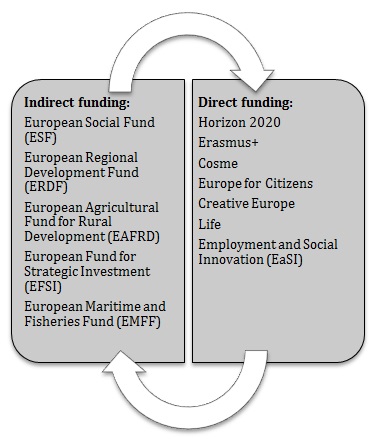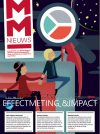
Religious heritage counts for Europe. Starting from this statement I want to emphasize that, in Europe, even in a secular society, it is not possible to separate the cultural tradition from the historical influence of religions.
In particular, religious frameworks could affect the European socio-cultural ecosystem on three main levels. Firstly, on the level of cultural heritage (tangible and intangible); secondly, as a social dimension (active and passive); and thirdly, as a spiritual dimension (ethics). This third level concerns the intimate life of European citizens, who are called to adapt the choices of the private life – with an indirect public impact – to a specific system of values.
The first two levels could be very relevant to the European socio-cultural ecosystem. It is not possible to consider a European monolithic fundraising strategy, for two main reasons: European programs are not focused exclusively on the final product of a project, but rather on the legitimacy of the whole development process; and the variety of legal statusses of different religious bodies (as well as of those who work on religious heritage) does not allow to bring all project proposals to a unique program.
Luca Baraldi:
Adapt the initial idea to funding opportunities, through a strategy of adaptive matchmaking.In general, we have to imagine the effective use of European funds as a joint action between indirect funds (managed through the mediation of states) and direct funds (managed directly from Brussels, awarded through calls for proposals). In particular, we can consider the indirect funds such as the resources to lay the basis of projects and develop the infrastructure design, to create the ‘containers’. Direct funds, however, tend to be regarded as resources for content creation and skills development. While the European Union provides significant resources for the infrastructural part, each stakeholder who wants to develop a project must be able to adapt the initial idea to funding opportunities, through a strategy of adaptive matchmaking.
 In the case of religious heritage, the theme of conservation will be inevitably linked to the issue of economic sustainability, which can potentially be pursued through some main activities: participatory community engagement for conservation; tourism; social, scientific and technical innovation; holistic management strategies. Potentially, the funding specific opportunities could be endless, but it is essential, at this critical stage of European history, to emphasize the real conditio sine qua non for an effective conservation trans-national plan: the existing networks operating in the field have the responsibility to join forces, in a condition of transparency and real knowledge sharing.
In the case of religious heritage, the theme of conservation will be inevitably linked to the issue of economic sustainability, which can potentially be pursued through some main activities: participatory community engagement for conservation; tourism; social, scientific and technical innovation; holistic management strategies. Potentially, the funding specific opportunities could be endless, but it is essential, at this critical stage of European history, to emphasize the real conditio sine qua non for an effective conservation trans-national plan: the existing networks operating in the field have the responsibility to join forces, in a condition of transparency and real knowledge sharing.
The first heritage that we must learn to value is the experience of our European stakeholders.
[Editor MMNieuws:] This article is an adaptation of the autor’s presentation at the The conference ‘Tourists, Travellers and Pilgrims: Encountering Religious Heritage in Today’s Europe, november 9-11 2016 in Vicenz, Italy.
